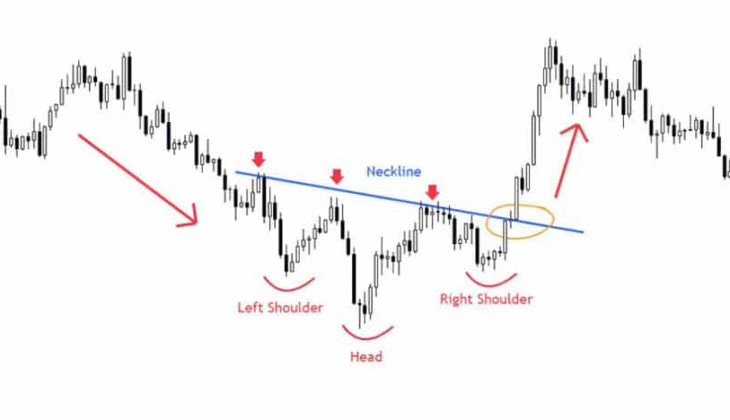In the fast-paced world of trading, where every decision can swing profits or losses in seconds, success often depends on more than just technical skill. While data analysis, charting tools, and market insights form the foundation of a solid trading strategy, the true differentiator between professionals and amateurs lies in mindset. Trading psychology is the silent engine that drives consistency, discipline, and clarity—especially in high-leverage markets where emotions can run high and risk exposure is magnified.
For professional traders, understanding and mastering trading psychology isn’t a luxury—it’s a necessity. The ability to stay focused and rational when markets turn volatile can mean the difference between sustainable success and repeated setbacks.
Understanding the Role of Psychology in Trading
At its core, trading is a psychological challenge. Every buy or sell order represents a decision influenced not only by logic and data but also by emotion and bias. Fear, greed, impatience, and overconfidence are among the most common psychological traps that affect even the most experienced traders.
High-leverage environments magnify these emotions because they amplify both potential rewards and risks. A small price movement can result in outsized gains or devastating losses, creating an emotional rollercoaster that tests even the most seasoned professional.
The key is not to eliminate emotions—because that’s impossible—but to manage them effectively. Professional traders learn to observe their feelings without letting them dictate their actions. They rely on process-driven decision-making rather than instinctual reactions. This detachment allows for clear thinking, even under market pressure.
Developing Mental Discipline and Emotional Control
Discipline is the cornerstone of psychological strength in trading. It’s what enables professionals to follow their strategy with precision, even when emotions push them toward impulsive moves.
One effective approach to cultivating discipline is through structured routines. Professionals often begin their trading day with predefined checklists: reviewing market conditions, evaluating open positions, and updating risk parameters. This systematic approach reinforces consistency and helps maintain objectivity.
Another essential aspect is emotional regulation. Traders who understand how to manage stress and maintain composure are better equipped to make rational decisions. Techniques such as mindfulness, meditation, or journaling can help traders stay grounded and self-aware. Over time, these practices build resilience—a critical quality in high-leverage environments where uncertainty is the only constant.
The Impact of Overconfidence and Loss Aversion
Two of the most pervasive psychological challenges for professional traders are overconfidence and loss aversion.
Overconfidence often emerges after a streak of profitable trades. The trader begins to feel invincible, taking larger positions or ignoring stop-loss levels. This mindset can quickly erode gains and lead to significant losses. To counteract overconfidence, professionals regularly review their performance data and accept that losses are an inherent part of trading.
Loss aversion, on the other hand, is the tendency to fear losses more than value gains. This often results in traders holding losing positions for too long, hoping for a reversal, or closing winning trades too early to “lock in profits.” Recognising and accepting that losses are part of a probabilistic system helps maintain perspective. Professionals know that consistency over time—not perfection—is the ultimate goal.
Building a Consistent Trading Framework
Consistency stems from structure. A well-defined trading plan eliminates much of the uncertainty that triggers emotional reactions. Professionals create clear entry and exit criteria, risk limits, and performance goals, then follow them without deviation.
Risk management plays a central role in this framework. By controlling exposure through position sizing, stop-loss orders, and diversification, traders reduce the emotional burden of individual trades. Knowing that a single position cannot jeopardise the entire account helps maintain composure and confidence.
Technology also aids consistency. Platforms designed for precision and flexibility—such as ADSS trading—provide the tools professionals need to manage trades efficiently in fast-moving markets. From advanced charting to real-time analytics, these platforms help traders focus on execution rather than emotion, reinforcing discipline and accuracy in every move.
The Power of Reflection and Continuous Learning
Professional traders understand that psychological mastery is a continuous process. Markets evolve, and so do emotional triggers. Regular reflection helps identify patterns of behaviour that lead to errors or success.
A trading journal is a powerful tool for this purpose. By recording every trade—along with the rationale and emotional state at the time—traders can identify recurring mistakes, such as overtrading during volatility or deviating from a plan after losses. Reviewing these insights promotes accountability and continuous improvement.
Learning from setbacks is equally vital. Instead of viewing losses as failures, professionals see them as feedback. This mindset shift transforms each experience into a learning opportunity, fostering growth and long-term resilience.
Conclusion: The Edge of a Strong Mind
In professional trading, psychology is not just a supporting factor—it’s a competitive edge. While anyone can learn strategies and technical analysis, only those who master their emotions achieve lasting consistency.
High-leverage markets test every aspect of a trader’s mindset: discipline, patience, confidence, and resilience. By developing emotional control, adhering to structured routines, and maintaining humility, professionals transform volatility from a threat into an opportunity.

